Lasers won’t save us from hypersonic weapons
- By Alex Hollings
Share This Article
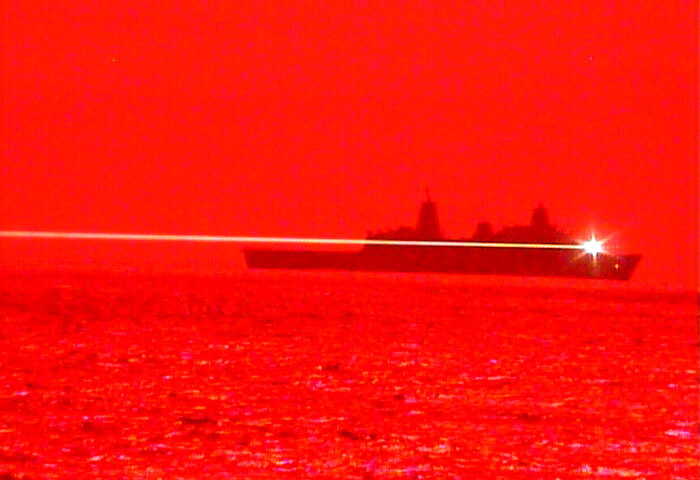
Lasers may be the cure for whatever ails you in science fiction, but if America is looking for a real solution to the myriad problems posed by modern hypersonic weapons, lasers – or directed energy weapons – won’t be able to provide the magic bullet that we’re looking for.
Modern hypersonic missiles, which combine flying at speeds in excess of Mach 5 with the ability to change course unpredictably, pose a unique challenge for even today’s most advanced integrated air defense systems. While the air defense enterprise is an incredibly complex one, the job itself is somewhat simple: Air defense systems identify and track inbound weapons using sensors, like radar, and then use computers to calculate the remainder of the weapon’s inbound flight path. With its course determined, air defense systems, like America’s MIM-104 Patriot, then launch a missile of their own, known as an interceptor, to fly toward a point further along the inbound weapon’s flight path to intercept it.
It’s the same basic principle as a quarterback leading a receiver: you don’t throw the ball to where the receiver is, but rather, to where the receiver will be by the time the ball gets there.
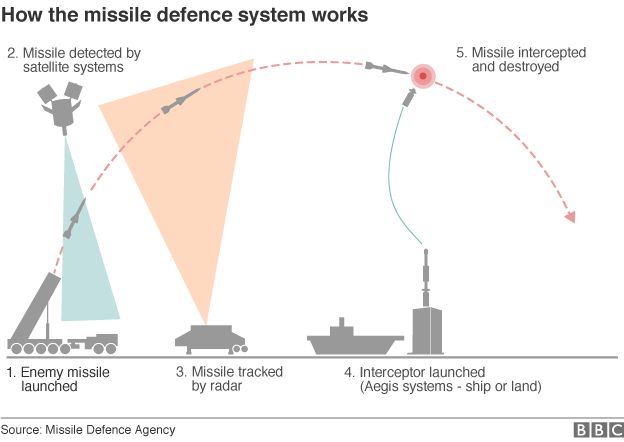
This approach to missile defense has proven very effective against ballistic missiles, which do travel at hypersonic speeds, but along a fairly predictable ballistic flight path. Cruise missiles pose a different type of risk, as they fly at much lower altitudes under power, more like an aircraft or suicide drone, which makes them less predictable. However, because of their lower relative speeds, air defense systems are often capable of intercepting cruise missiles using the same sort of arithmetic.
But modern hypersonic missiles complicate matters a great deal. Rather than achieving hypersonic speeds by flying along a predictable ballistic flight path, hypersonic boost-glide weapons and hypersonic cruise missiles both change course unpredictably while flying at these extreme speeds. As a result, an air defense system’s calculations to predict the remainder of the weapon’s flight path are rendered more or less moot, and because of their high closing speed, there’s little to no time left to attempt a recalculation to launch another interceptor.
The solution to this problem may be directed energy weapons or lasers. Rather than launching a missile to close with a target at supersonic speeds, lasers travel at the speed of light, and while a Patriot launch station may only carry four interceptors… you don’t run out of lasers unless you run out of energy.
In theory, it’s a perfect solution. But in practice… things get more complicated.
Related: The Marines’ new drone-truck can take out enemy ships from 1,000 miles out
The current state of lasers in the US military

While massive and powerful chemical lasers were all the rage in the 1980s, in recent years, the vast majority of developmental efforts have been focused on the comparably smaller, safer, and less powerful solid-state laser approach.
Chemical lasers work by sending an electric current through a gas to generate light through a process known as population inversion. In other words, operating a chemical laser means toting a bunch of hazardous chemicals around with you and adding size, weight, and danger to operators.
Solid-state lasers, on the other hand, use a solid crystalline material, rather than a gas or liquid, as the “lasing medium.” This makes them far smaller and far safer to operate – but until fairly recently, they were simply unable to produce enough consistent power for weapons applications.
Today, solid-state lasers are an increasingly promising technology, with numerous developmental efforts ongoing and a number of laser systems already deployed on U.S. Navy vessels.
The U.S. Navy first installed a laser on one of its warships in 2014 in the 33-kilowatt AN/SEQ-3 Laser Weapon System (LaWS), with the stronger 60-kilowatt HELIOS, or High-Energy Laser with Integrated Optical Dazzler and Surveillance system, following in 2019. The Navy believes HELIOS will eventually be able to output as much as 150 kilowatts. It wants to begin testing the 300-kW HELCAP, short for High Energy Laser Counter Anti-ship Cruise missile Program, next year.
In September of last year, Lockheed Martin delivered the most powerful tactical laser fielded to date, the 300-kW-class Indirect Fires Protection Capability-High Energy Laser (IFPC-HEL), to the U.S. Army. This system delivers only about 1/3 of the power output provided by the massive MIRACL from the 1980s, but is compact enough to be carried by a single truck or inside the fuselage of a variety of aircraft.
In late July, Lockheed Martin announced plans to field a 500kW-class laser which will offer a number of new defense possibilities but will still fall well short of being able to stop an inbound hypersonic missile.
Related: A Patriot missile battery from the US could create new headaches for Russia
The big problems with using lasers to shoot down hypersonic missiles
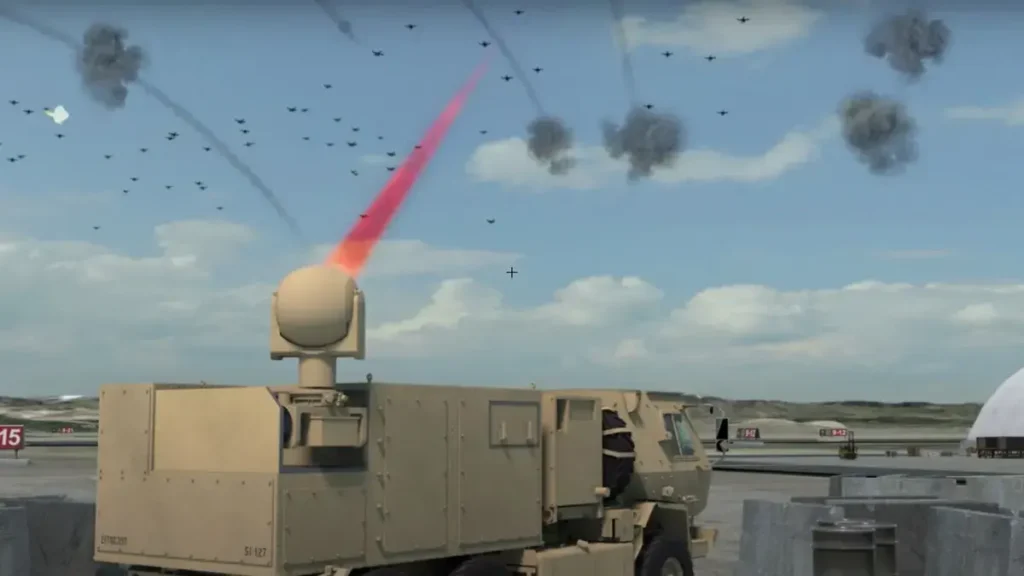
While lasers are already becoming extremely useful close-range weapons and air defense systems, there are several serious technological limitations that prevent them from being used to take down incoming hypersonic, or even ballistic, missiles.
Power Output
According to Pentagon assessments, power output is the first limiting factor. While a clear consensus on power requirements for different types of targets doesn’t exist, the DoD does have a general rule of thumb for the power output by a system and its potential applications:
- 100kW-Range Weapons: Can engage unmanned aircraft, small boats, rockets, artillery, or mortars
- 300kW-Range Weapons: Can engage the side of a cruise missile fuselage to destroy it or knock it off course
- 1MW (1,000kW)-Range Weapons: Can engage ballistic or hypersonic missiles, but may be limited to burning through the side of the fuselage
As you can tell by looking at those figures, the systems currently deployed on U.S. Navy ships can engage slow-moving drones and even small boats by concentrating a laser beam on the target for an extended period of time and eventually burning through them to damage internal systems. The more powerful 300kW IFPC-HEL and HELCAP, on the other hand, are powerful enough to burn through the side of a cruise missile in flight to destroy it or send it off course, but again, in order to do so, they must keep the beam pointed at the exact same spot on the fuselage as the missile flies by. In 2020, it took 15 seconds of sustained fire from a 150kW-class weapon to destroy an airborne drone.
This approach, some contend, could be easily countered by designing missiles to roll during their flight path, making it impossible to focus the beam on one singular point.
In order to stop a hypersonic missile from reaching its target, the DoD estimates that they’d need at least a 1 megawatt (or 1,000 kilowatt) laser. That’s more than three times the power output of today’s most advanced tactical laser system… but even such a laser would likely struggle to burn through the nosecone of a hypersonic missile. After all, these weapons are designed to withstand temperatures in excess of 1,700 degrees.
And as the Navy has pointed out, it’s cheaper to build missiles with more heat shielding than it is to field lasers with more power output – so as laser defenses become more commonplace, missiles will almost certainly be better shielded and thus, less susceptible to laser engagement.
Line of Sight
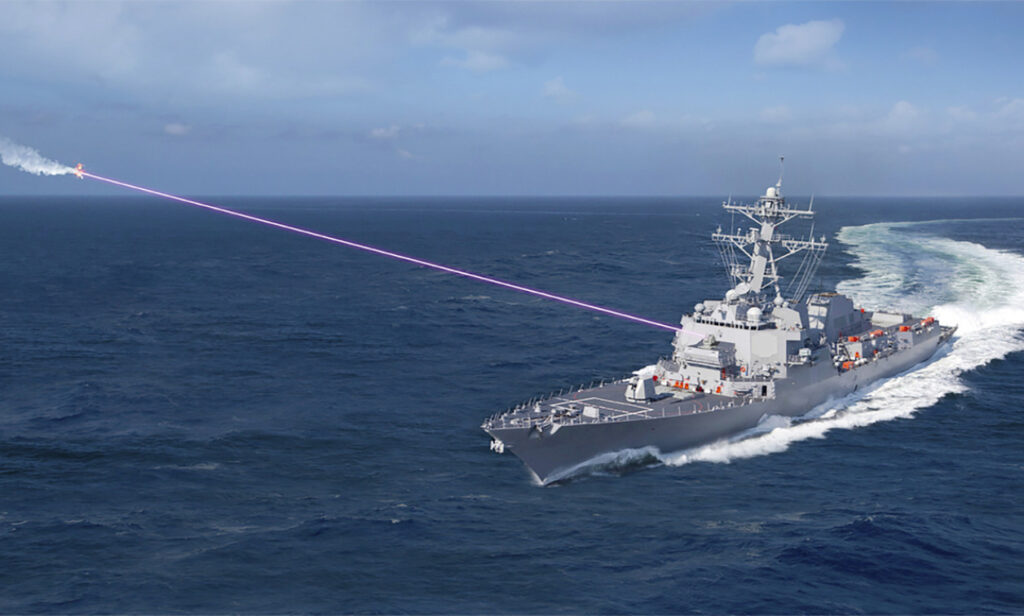
Unlike interceptors, which can be launched at targets identified beyond the horizon, the very nature of lasers limits them to line of sight. This presents problems when the laser needs time to burn through a target. Hypersonic weapons like China’s DF-ZF may be traveling at 2 miles per second or even faster, meaning there would be precious little time to actually destroy the weapon by the time it appeared in the lasers’ line of sight.
Atmospheric Scattering
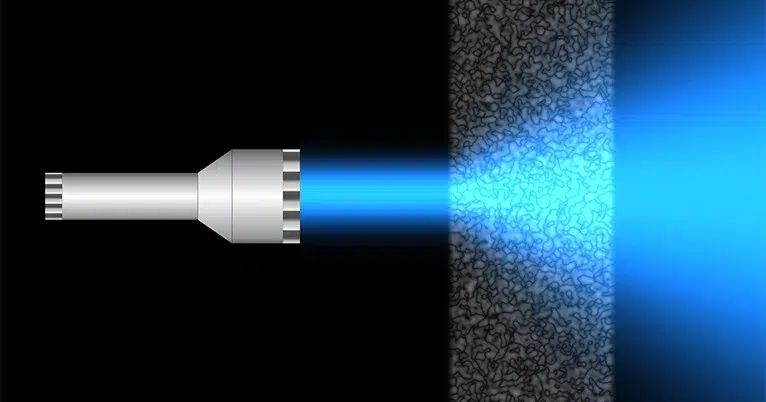
We tend to think of lasers as a thin beam of energy that continues onward forever, but that’s really not the case at all. Water vapor, sand, salt, smoke, air pollution, and other substances found in the atmosphere can all have a scattering effect on laser beams. This atmospheric turbulence is a serious problem – to the point where the Pentagon currently sees lasers as a viable weapon system only at ranges of less than a mile. And even optimistic projections for the near future still only think lasers will be viable at ranges of less than five miles.
Again, when we’re talking about countering a missile that’s designed to manage heat and traveling at more than 2 miles per second, this leaves almost no time for intercept.
Thermal Blooming
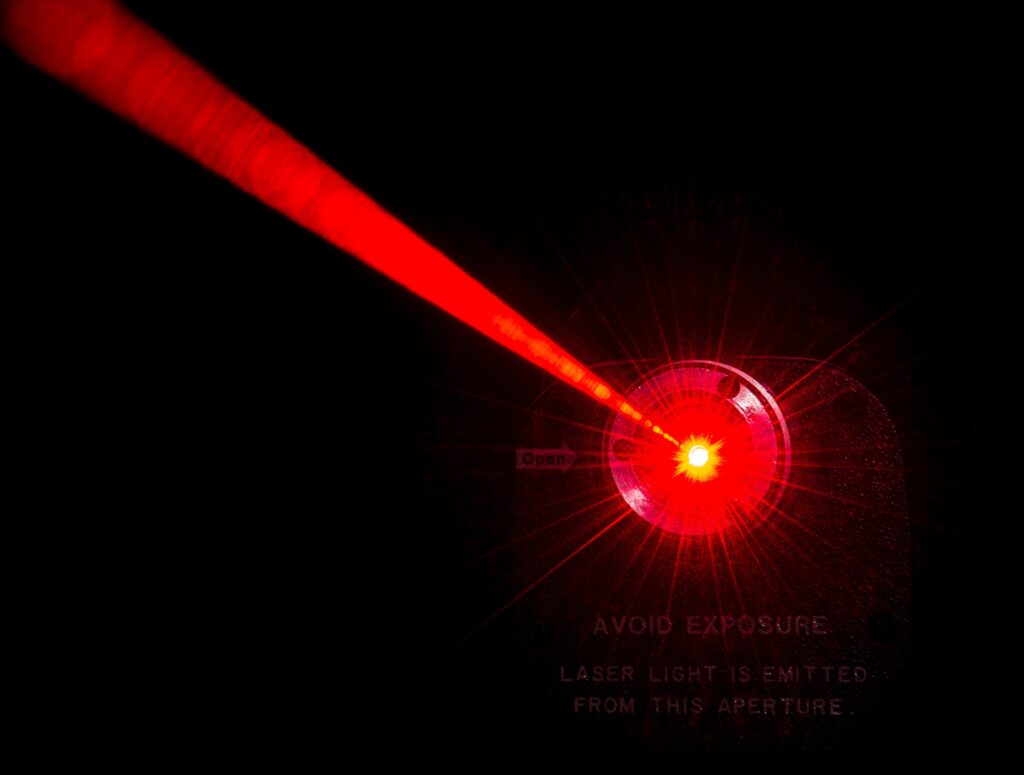
As a laser continues to fire in the exact same direction for an extended period, it heats up the air it passes through, which ultimately defocuses the laser beam. This isn’t a real issue when engaging a missile from the side or at an angle as the missile flies through the sky, but it becomes a huge problem with engaging a missile that’s flying straight at you.
As a result, lasers will not be an effective means of self-defense until the amount of power they produce is so immense that they can destroy a target in a split second.
Beam control

Of course, thermal blooming is only a problem if you can keep your laser pointed in the same direction while riding a warship moving at high speeds on the open ocean. In order to be effective, a laser needs to stay focused on a single point on the target as it heats up and burns through it – and there are multiple programs aimed at doing just that like Position Sensing Devices (PSD), Fiber Optic Gyros (FOG), Fast Steering Mirrors (FSM). However, as of 2018, Deputy Director of the Missile Defense Agency Jon Hill stated in no uncertain terms all of these efforts were still working with margins “thousands of times wider” than those required for missile defense.
Related: Hypersonic firm Hermeus proves their Mach 5+ jet engine works
How lasers really can aid in the missile defense effort

Technology has advanced so rapidly throughout the 20th and 21st centuries that it seems irresponsible to ever count a concept out. Overcoming engineering challenges is, more often than not, simply a question of time, resources, and investment – and the U.S. Defense Department is exceedingly good at giving contractors at least two of those things. But, from where laser technology sits today, it has far more likely applications as a supplement to close-range defenses like the close-in weapon system (CIWS) than it does for taking down hypersonic missiles.
However, that doesn’t mean lasers don’t offer a significant (and growing) benefit to defense. Eventually, high-powered lasers will likely exceed the capabilities of systems like the 20mm CIWS, reducing the costs associated with close-in defense and offering a wide variety of new applications for close-in defensive systems. (Because laser power can be adjusted, such systems would even allow for more escalating options in limited engagements). Over time, the range of these systems will likely grow to many miles and they’ll be incorporated into other systems to supplement targeting data for battle networks and more.
But, at the end of the day, lasers in the real world are limited by physics in ways they never were in the science fiction we’ve grown up with. Will lasers ever become the all-purpose solution they’re often perceived to be? Maybe… but I wouldn’t bet against kinetic options any time soon.
Read more from Sandboxx News
- Exploring the claims that America’s TR-3A UFO fought in Desert Storm
- The MC51 was a super short blaster used by UK’s elite warriors
- Russia is using deadly air tactics to stop Ukraine’s counteroffensive
- Colt’s first weapon was also the US Army’s first revolving rifle, but it never became famous
- The Smatchet was a beastly weapon for WWII commandos designed by the legendary William Fairbairn
Related Posts
Sandboxx News Merch
-

‘AirPower’ Classic Hoodie
$46.00 – $48.00 Select options This product has multiple variants. The options may be chosen on the product page -

‘Sandboxx News’ Trucker Cap
$27.00 Select options This product has multiple variants. The options may be chosen on the product page -

‘Sandboxx News’ Dad Hat
$27.00 Select options This product has multiple variants. The options may be chosen on the product page

Alex Hollings
Alex Hollings is a writer, dad, and Marine veteran.
Related to: Gear & Tech

The AGM-181 LRSO missile will modernize America’s nuclear triad

Navy will soon announce the contract award for its F/A-XX 6th-generation jet, according to reports

America’s new air-to-air missile is a drone’s worst nightmare
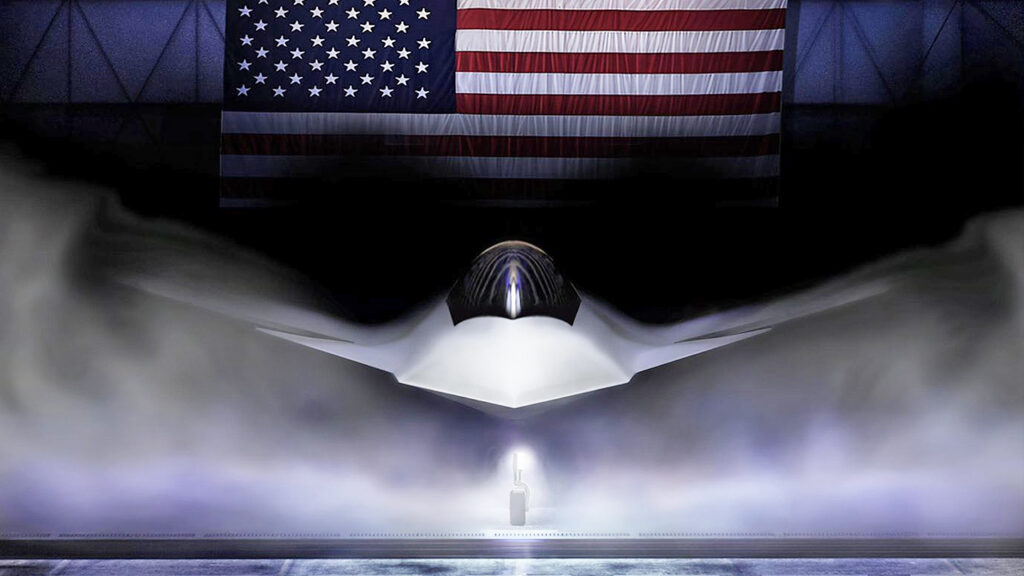
What we can deduce about the Boeing F-47 and its capabilities so far
Sandboxx News
-

‘Sandboxx News’ Trucker Cap
$27.00 Select options This product has multiple variants. The options may be chosen on the product page -

‘AirPower’ Classic Hoodie
$46.00 – $48.00 Select options This product has multiple variants. The options may be chosen on the product page -

‘AirPower’ Golf Rope Hat
$31.00 Select options This product has multiple variants. The options may be chosen on the product page -

‘Sandboxx News’ Dad Hat
$27.00 Select options This product has multiple variants. The options may be chosen on the product page
